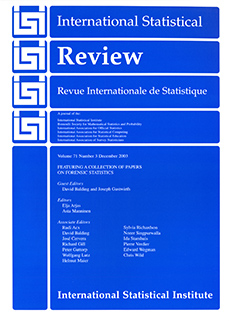Abstract
Different criteria of optimality are used in different subcultures of statistical surveillance. One aim with this review is to bridge the gap between the different areas. The shortcomings of some criteria of optimality are demonstrated by their implications. Some commonly used methods are examined in detail, with respect to optimality. The examination is made for a standard situation in order to focus on the inferential principles. A uniform presentation of methods, by expressions of likelihood ratios, facilitates the comparisons between methods. The correspondences between criteria of optimality and methods are examined. The situations and parameter values for which some commonly used methods have optimality properties are thus determined. A linear approximation of the full likelihood ratio method, which satisfies several criteria of optimality, is presented. This linear approximation is used to examine when linear methods are approximately optimal. Methods for complicated situations are reviewed with respect to optimality and robustness.
Citation
Marianne Frisén. "Statistical Surveillance. Optimality and Methods." Internat. Statist. Rev. 71 (2) 403 - 434, August 2003.
Information




